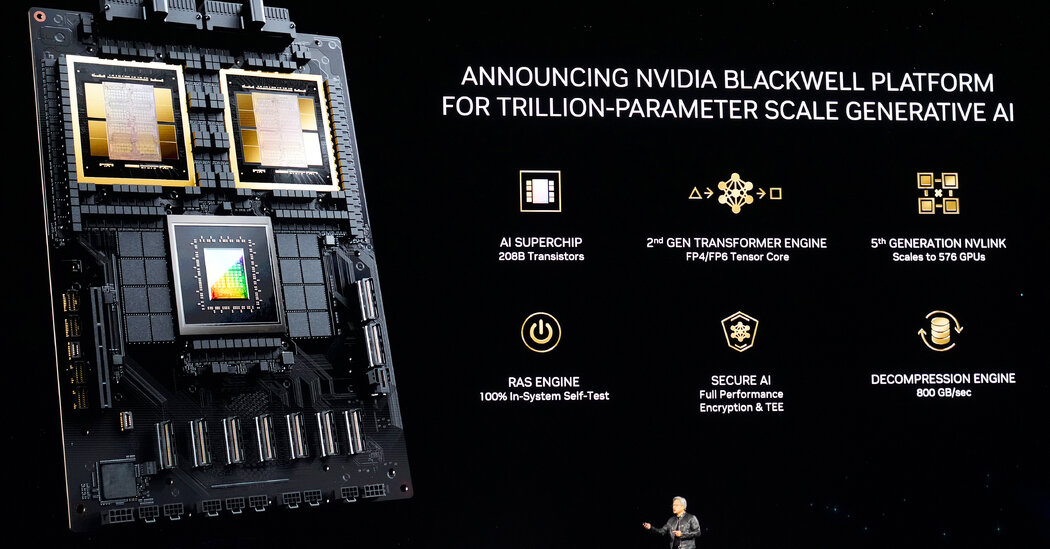The Silicon Valley company was again lifted by sales of its artificial intelligence chips, but it faces growing competition and heightened expectations.
Nvidia, which makes microchips that power most artificial intelligence applications, began an extraordinary run a year ago.
Fueled by an explosion of interest in A.I., the Silicon Valley company said last May that it expected its chip sales to go through the roof. They did — and the fervor didn’t stop, with Nvidia raising its revenue projections every few months. Its stock soared, driving the company to a more than $2 trillion market capitalization that makes it more valuable than Alphabet, the parent of Google.
On Wednesday, Nvidia again reported soaring revenue and profits that underscored how it remains a dominant winner of the A.I. boom, even as it grapples with outsize expectations and rising competition.
Revenue was $26 billion for the three months that ended in April, surpassing its $24 billion estimate in February and tripling sales from a year earlier for the third consecutive quarter. Net income surged sevenfold to $5.98 billion.
Nvidia also projected revenue of $28 billion for the current quarter, which ends in July, more than double the amount from a year ago and higher than Wall Street estimates.
“We are poised for our next wave of growth,” Jensen Huang, Nvidia’s chief executive, said in a statement.
